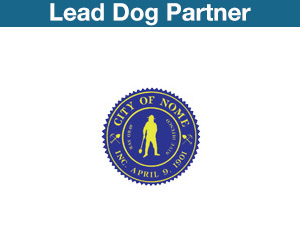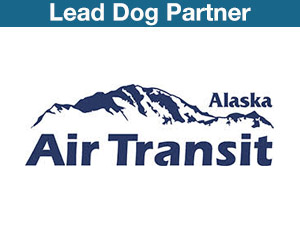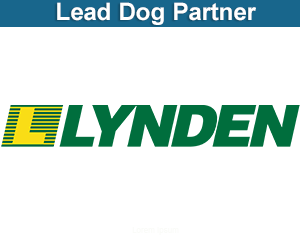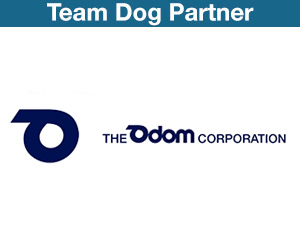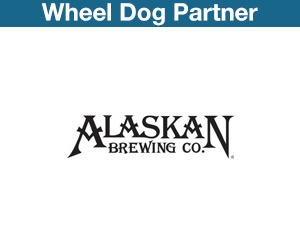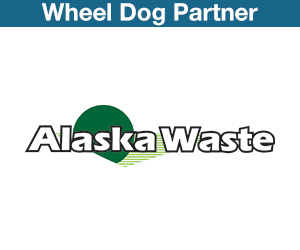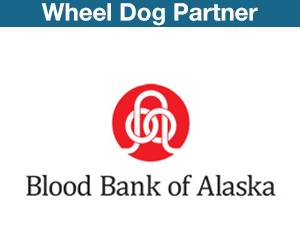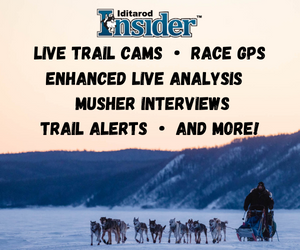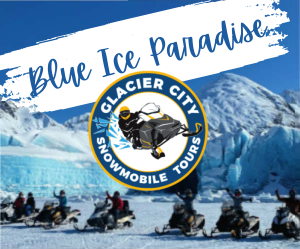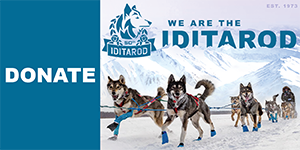5 PM Friday Nulato, 100 miles from Ruby and waiting for first musher
Moving always with the race, our Insider crew is now in Nulato, a village situated on the north side of the Yukon. Instead of the single channel we saw in Ruby, the river has expanded onto a broad flood plain with braids, channels, islands, sloughs, and remnants from epic floods complete with oxboughs bordered by thickets of willows and alders. From the air we can see moose browsing in the thickets, chest deep in what many villagers are calling the deepest snow fall in memory.
The trail is a fine line laid on the broad band of the river. Even snowmachiners are reluctant to leave the single trail, cautious about finding themselves irretrievably buried in soft snow. The inexcusable stupidity of burying yourself leaves friends disgruntled if they have to help dig you out of a hole.
Walking around town, I discovered pedestrians were like snowmachines and could not walk off trail. Ptarmigan coveys broke from thick willows and landed further up the road.
Mushers on the trail to Galena
At the Nulato checkpoint, local volunteers are offering their version of the race. I hear a checker “The two Seaveys, one right behind the other, are ten miles out of Galena. We might see them early tomorrow morning.” And, countering, someone else suggests that they will pass Zirkle, “She’ll never let it happen, she’ll get back on the trail and keep going.”

downriver Yukon, direction Kaltag, the river is miles wide . The rough ice of November is now buried in five feet of snow.
In truth, we seem to have two trends in the race. The Seaveys, Mitch and Dallas, Aliy, and 2011 champ Baker are making big plays on 100 mile runs to the front, displaying strength and determined to take control of the race. Behind, a more unpresuming group represented by Aaron Burmeister and 4x champ Jeff King, are cautiously playing it cool about three hours back. These two have not engaged in any break away moves, although their dog teams appear to be quite capable of launching an attack.
King and Burmeister have been circumspect, other than to say their dogs are inhaling calorie rich rations, and maintaining their allegiance to a schedule that basically run like this: try to run at the turn of light from around 4am to noon and 5pm to midnight, then rest at everything in between.
My colleague at the Insider and I believe Burmeister is setting up for a 100 Mile run (50 to galena and 50 more to Nulato) which will land him, including a big meal stop in Galena, around 4 or 5 in the morning at our location in Nulato. See if we’re wrong—your analysis is good as ours.
Here’s some additional thoughts for your fantasy musher predictions. Mushers can play their runs and rests in a variety of ways. However, it could be -40f on the river tonight. Big RED FLAG> change the strategy and don’t do any camping on the ice of the Mighty Yuke if possible (that thought goes thru a musher’s nimble mind.)
Trailbreakers continue to rule
Again, we encounter the trail breakers in Nulato, stopping for meals and fuel, now bound for Kaltag. Finally, I meet the Daddy of them all, literally and figuratively. Roger Ashcroft has been breaking trail since ’92, therefore claiming seniority on the team, and has his two sons, Daniel and Dustin, on the team.
Roger and crew, I learned, designed, modified, and built the three trail groomers you have seen at this site in his garage. All of them contributed to the design and welding of the finished product. The end product has to be extremely durable, and adapt to a variety of conditions over a thousand miles. The cutting blades are ingeniously designed to raise and lower depending on conditions. The trail breaking machines average anywhere between as low as 5mph to 15mph cross country and maybe 20 mph on the wide Yukon.
Mushers and others have been astounded by the trail established by the trail breakers. Roger told me the entire race trail would have been lost over the Alaska range had they not immediately groomed the trail after the Iron Dog race. New snow almost buried the established trail to the summit of the Alaska Range trail at Rainy Pass. Roger told me that the crew is all veterans, Noah Burmeister being the only first year member.
This trip is not for all snowmachiners, although many dream of a 1000 mile alaskan wilderness ride. “I’ve had guys do it one time and tell me they would never do it again. Its a lot of work.” Roger told me.
A note on the Yukon
Having trapped and fished on the Yukon, I take for granted the annual cycle. Ice, in thin sheets, begins to

The yukon is rough ice in November, only after snow storms does it gradually fill in smooth. By springtime, the surface is windblown and flat, like you see now by Nulato.
run on the river in early October. By the end of the month, the sheets have thickened, colliding like miniature ice bergs into bigger sheets of “rough ice.” By the first of November, a resident in a village would be accustomed to a freight train backgrond noise of colliding ice. Somewhere in the middle of November, the noise stops and the river ice stops moving as the ice literally jams bank to bank. Sheets of ice are upended, flooded by the river which is partially damned. A week later, all freezes solid and the river is frozen until May.
In the meantime, residents are left with a winter highway strewn with ice debris. Only after several snow storms does the wind gradually begin to drift the snow on top of the rough ice. By mid winter, if you are lucky, the rough ice lays under the snow—-the picture of the river you now see in march at Iditarod time. Generally speaking, the Yukon is four feet thick by now and safe. But, traveling on the Yukon still demands local knowledge since there are sections which are disturbed by fast moving water and could be fragile. Better to stay on the established trails of the locals!
From a distance, I also took a photo of a fishwheel buried in snow at Nulato, used on the Yukon to catch salmon for eating and also for dog food. Historically , many of the great foundation huskies come from this area of the Yukon—and most of them survived quite nicely for a lifetime on salmon. I included a few photos from my collection just to show you what they look like in summer. The wheels dip in about ten to fifteen feet of water and historically catch 100’s to thousands of salmon in a good run. Until I began racing, my trapline dogs lived exclusively on fat rich chum salmon caught on the Yukon.
Final Thoughts
Race wide open, a clear advantage not revealed, and mushers in Nulato by early morning Friday.,











